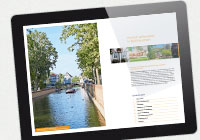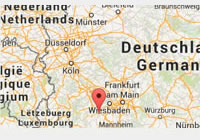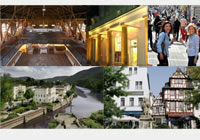
Town centre and historical quarter
Around 1200, the town’s rulers - the counts of Sponheim - created a new town extending either side of the Nahe river at the foot of Kauzenberg hill. Kreuznach became a double town. Each of the towns received its own wall. The counts built a castle on Kauzenberg hill: Kauzenburg castle. The building of the stone bridge and the Pauluskirche church on an island in the Nahe river between the two town quarters concluded development for a time.
For the next 700 years, life went on within the old town walls. But in the 19th century, urban development caused the town to outgrow the walls enclosing it. The district to the west was called the New Town, the district to the east was known as the Old Town. Although the two districts formed one entity, they each developed differently and in their own way.
Eiermarkt square was the central market square of the New Town for a long time. But in 1900, Kornmarkt square assumed this role.
In World War Two, most of the Old Town stretching between the railway line and the Nahe river was bombed. The medieval townscape of the New Town managed to survive and was only changed during the redevelopment carried out in the eighties. The historical flair of this quarter was retained successfully, though. In an attempt to avoid confusion, the New Town is now known as the historical quarter (signposted Historischer Stadtkern or Historische Altstadt).
In the 80s, the two-kilometre long main shopping street was made into a pedestrian zone which extends through both town districts.





